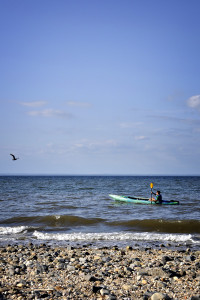It’s been some time since I blogged photography tips for you. I am not sure why I got away from it, but I have a renewed interest in trying to help beginners take better photos. This may be inspired by the great number of people who have discovered photography as a new hobby during the pandemic and have recently invested in camera gear to take better photos. So whether it is with your phone or your new camera, I hope my tips will give you inspiration and guidance the next time you’re out taking photos. Today’s post discusses one of the most basic rules of composition.
The Rule of Thirds is a powerful rule, but keep in mind it can always be broken if not applying the rule make a better photo. The Rule states that if elements in your composition are placed left or right, or above or below, the center, you will have a stronger composition.
In the image above taken at Point Lobos, CA in January 2020, my subjects along the path are in fact centered horizontally, but pushed to the far right. The bulk of the landscape falls below the center, and the horizon line is above the center. Many readers and viewers tend to read text or an image from left to right in Z pattern, so the viewer’s eye is naturally drawn along the path to land on my subjects. The pop of the red sweatshirt also stands in contrast to the blue, green and brown landscape to inform that the subjects, my two dear photography mentors Ken and Andre, are an important focus within the image of this beautiful coastal landscape we were visiting during a photo workshop.
For further discussion fo the Rule of Thirds, read this post here that demonstrates this rule with a grid overlay on images and encourages you to take shots with various compositions to see how one may be stronger than another, or tell a different story based on your composition within the grid.










